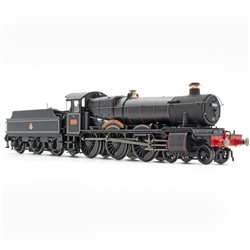The answer to the question "What is the colour of rust?" is more a tip about modelling in general than a lesson in...
No products
Product successfully added to your shopping cart
There are 0 items in your cart. There is 1 item in your cart.
Search Tips
What is the Manor Class engine?
The Manor Class (also called 7800 Class) is a fascinating piece of British railway heritage, representing a class of steam locomotives developed by the Great Western Railway (GWR) in the 1930s and 1940s. You may already be familiar with the famed Castle and King Class locomotives, but the Manor Class is distinct in its own right, designed with a particular purpose in mind. Known for their versatility, Manor Class engines were medium-sized locomotives, aimed at providing a balance of power and efficiency for mixed-traffic work—handling both passenger and freight duties across more challenging routes. If you’re intrigued by the golden age of British steam, the Manor Class offers a glimpse into the ingenuity and adaptability that powered the nation's railways.
Designed by Charles Collett, the Manor Class engines were introduced in 1938 to answer a growing need for a powerful yet lightweight engine suitable for lines with weight restrictions, especially on routes across the Welsh Marches and in rural parts of the country. These engines were relatively light compared to some of their contemporaries, making them ideal for tracks that couldn’t bear the weight of larger locomotives. For instance, many parts of Wales and the West Country had older infrastructure with more restrictive weight limitations, and the Manor Class filled this niche perfectly.
With a 4-6-0 wheel configuration, the Manor Class was built with both power and stability in mind, yet it was slightly smaller and lighter than other GWR models. Each locomotive was powered by a two-cylinder design that allowed for a smooth, reliable performance while keeping the engine’s size manageable. This setup provided ample traction for steep gradients, such as those found in Wales, where the Manor Class engines became a familiar sight. The engines could reach speeds of up to 60-70 mph, and although not as fast as express engines, they had a reliability and flexibility that endeared them to crews and passengers alike.
Another point of interest is the way the Manor Class was named. Each engine was given the name of a British manor house, reflecting a sense of heritage and continuity with the landscapes they travelled. Some of the original Manors include names like Foxcote Manor and Hinton Manor, creating a strong connection between the locomotives and the historic estates that symbolised Britain’s architectural and cultural legacy. For enthusiasts, these names still evoke an era when the railway journey itself was a narrative, winding through countryside estates, villages, and market towns.
During the Second World War, production of the Manor Class was paused, but following the war’s end, demand surged and the GWR built additional units in 1950. In total, 30 Manors were constructed and they served the railway well into the 1960s. However, with the modernisation of British Railways and the shift towards diesel and electric engines, the Manors were gradually retired. Many were scrapped, but a few were saved by enthusiasts and railway heritage groups, who recognised their unique place in railway history.
Today, you can still experience the charm of Manor Class engines, as several have been lovingly restored and preserved by railway societies. Popular heritage railways, such as the Severn Valley Railway and the West Somerset Railway, run Manor Class locomotives, allowing modern-day passengers to experience their smooth performance and the evocative sights, sounds, and smells of steam rail travel. Standing close to a Manor in steam, you may be struck by the warmth and presence these engines radiate—a reminder of the era when locomotives were as much about craftsmanship as they were about transportation.
Click here to receive the tips weekly in your mailbox. You can unsubscribe at any time.








